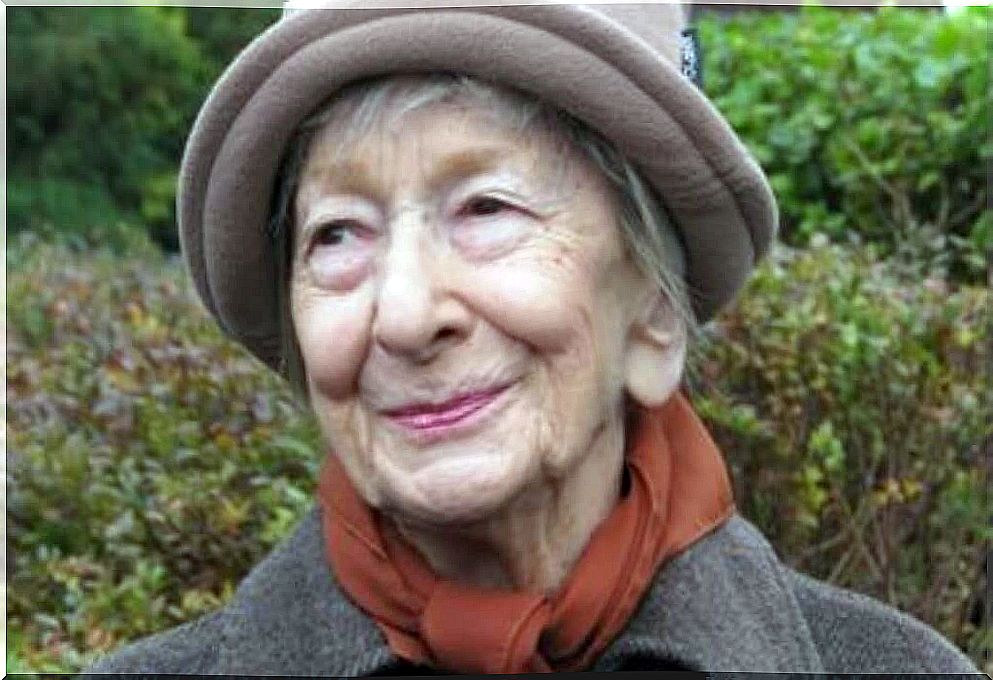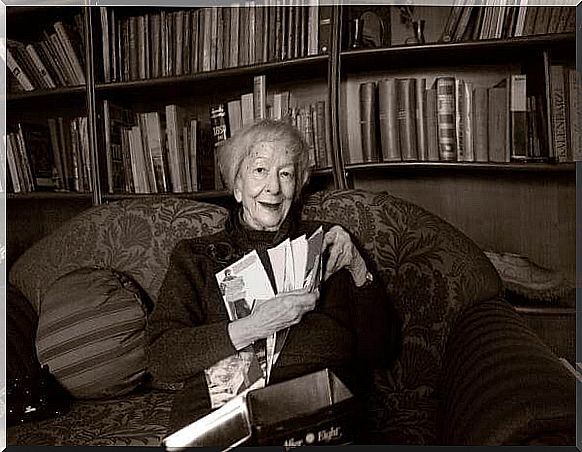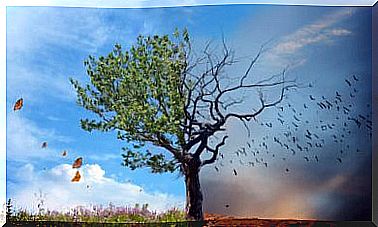Wislawa Szymborska: Biography And Works

Wisława Szymborska was a Polish poet, essayist and translator. Author of more than 15 books of poetry, she also devoted herself to illustrating and editing.
During her youth, Wisława was forced to study clandestinely in Nazi-occupied Poland. After the war, the poet became a defender of communism. However, throughout his life, disenchantment would increase and he ended up becoming disillusioned with this ideology. After his first two books, Wisława rejects the communist leader Stalin.
Winner of the Nobel Prize for Literature, her life was not just literary creation. Wisława Szymborska also became very popular thanks to his Polish translations of universal masterpieces.
Childhood
Actually, Wisława was Szymborska’s middle name. Her full name was Maria Wisława Anna Szymborska and she was born on July 2, 1923 in Prowent, now part of the city of Kórnik, in western Poland.
At the time of his birth, his father worked as a butler under Count Władysław Zamoyski, a tycoon and landowner. The count was the owner of the city of Kórnik.
When the count died in 1924, the Szymborska family moved to Torun. There, at the age of five, Wisława began writing poetry while studying at an elementary school.
The atmosphere in his house was quite intellectual; they all read a lot and argued about books. Wisława always showed her poems to her father and, if he liked what she wrote, he would give him a coin as a reward.
After a second move in 1931, Wisława enrolled in a convent school in Krakow, but was unable to finish his studies there. The poet, during her youth, suffered personally from the premature death of her father and, socially, as a result of the German occupation of Poland.

The impact of the second world war
When World War II began, Germany occupied Poland in 1940. This caused Polish citizens to be unable to attend public schools.
The poet had become strongly linked to the ancient royal city below Wawel Castle. Wisława continued his studies in an underground school, under Wawel Castle.
It should be noted that, during the 20th century, Wawel Castle was the residence of the President of Poland after the nation was invaded. Krakow became the seat of the General Government of Germany, and Wawel later became the residence of the Nazi Governor General Hans Frank.
After years of training clandestinely, Wisława Szymborska was able to finish her high school exams in 1941.
In 1943, she became a railroad employee, managing to evade deportation to Germany for forced labor. This was, in turn, the period in which he managed to work creating illustrations for an English textbook and began to write stories and poems.
When the war ended in 1945, Wisława Szymborska enrolled at the Jagiellonian University in Krakow to study Polish literature. Later, he switched to sociology. However, he had to abandon his studies in 1948 without obtaining his degree due to financial constraints.
Wisława Szymborska’s Literary Beginnings
In March 1945, Wisława Szymborska made his debut in a Krakow newspaper called Dziennik Polski with his poem Szukam słowa ( Searching for the word ). Soon, many other poems began to appear in different newspapers and local media.
After abandoning her studies in 1948, she assumed the position of secretary in a biweekly educational magazine. At the same time, she also worked as an illustrator for the magazine and continued to write poetry. In 1949, he completed his first collection of poems.
Like most intellectuals of that time, Szymborska’s early works reflected the socialist philosophy that was the norm in Poland at the time. His debut collection Dlatego żyjemy ( That is why we live, 1952), contains many poems that echoed his political ideology.
In the 1950s, Szymborska became a member of the Polish Workers’ Party. Her next collection, Pytania zadawane sobie ( Questions Asked to Yourself ), published in 1954, echoed her socialist sentiment.
However, Szymborska became disillusioned with communist ideology, and her third collection of poems, Wołanie do Yet ( Call to the Yeti ), published in 1957, reveals her disenchantment and changes in her thinking. The poems in this collection express his dissatisfaction with communism, in particular, with Stalinism.
In them, he shows his deep concern for humanity and came to compare the Soviet leader Stalin in a poem with an abominable snowman. With these actions, he severed all ties with the Polish Workers’ Party.
The author ended up rejecting her first two works, prior to 1957. He considered them within the wake of socialist realism, which he had already renounced and with which he would be very critical for the rest of his life.
Wisława Szymborska: o bra
Throughout his life, Wisława Szymborska wrote more than fifteen books of poetry and prose. However, she was not only a famous poet, but also acquired a considerable reputation as a critic and translator thanks to her book reviews and translations of French poetry.
Starting in 1968, he ran his own book review column called Lektury Nadobowiązkowe. Much of these essays would be collected and later published in book form.
In addition to the 1996 Nobel Prize in Literature, Szymborska received many other accolades. Among them: the Prize of the Ministry of Culture of Poland (1963), the Goethe Prize (1991), the Herder Prize (1995) and the Prize of the PEN Club of Poland (1996), etc.
In 2011, Wisława Szymborska was awarded the Orła Białego Order or the Order of the White Eagle. It should be added that this is the highest honor bestowed on any individual by the Government of Poland.

Personal life and legacy
Wisława Szymborska married the poet Adam Włodek in 1948. Their home at Krupnicza Street 22 in Krakow became a nerve center for writers of his time. Among them, the renowned writer Czeslaw Milosz stands out.
The couple separated in 1954, although they remained close friends until death. They had no children.
Szymborska became romantically involved with the writer Kornel Filipowicz fifteen years later. They never married and always lived apart.
Wisława Szymborska died peacefully in her sleep on February 1, 2012 at her home in Krakow. He was then 88 years old and was working on a new poem.
Today, Szymborska’s poems have been included in some school programs. She has become an internationally recognized poet and her work has been translated into different languages such as English, French and German; likewise, there are numerous translations into languages such as Arabic, Hebrew, Japanese and even Chinese.
His poems are especially notable for their language and precision. At the same time, his poetic work gives off a sense of ironic detachment.
While Polish history from World War II to Stalinism clearly influenced her poetry, Wisława Szymborska was also a deeply personal poet, exploring the great truths that exist in everyday, ordinary things. His poetry is a reflection of the interests that marked his life and how it, like his work, evolved and took different paths over time.









